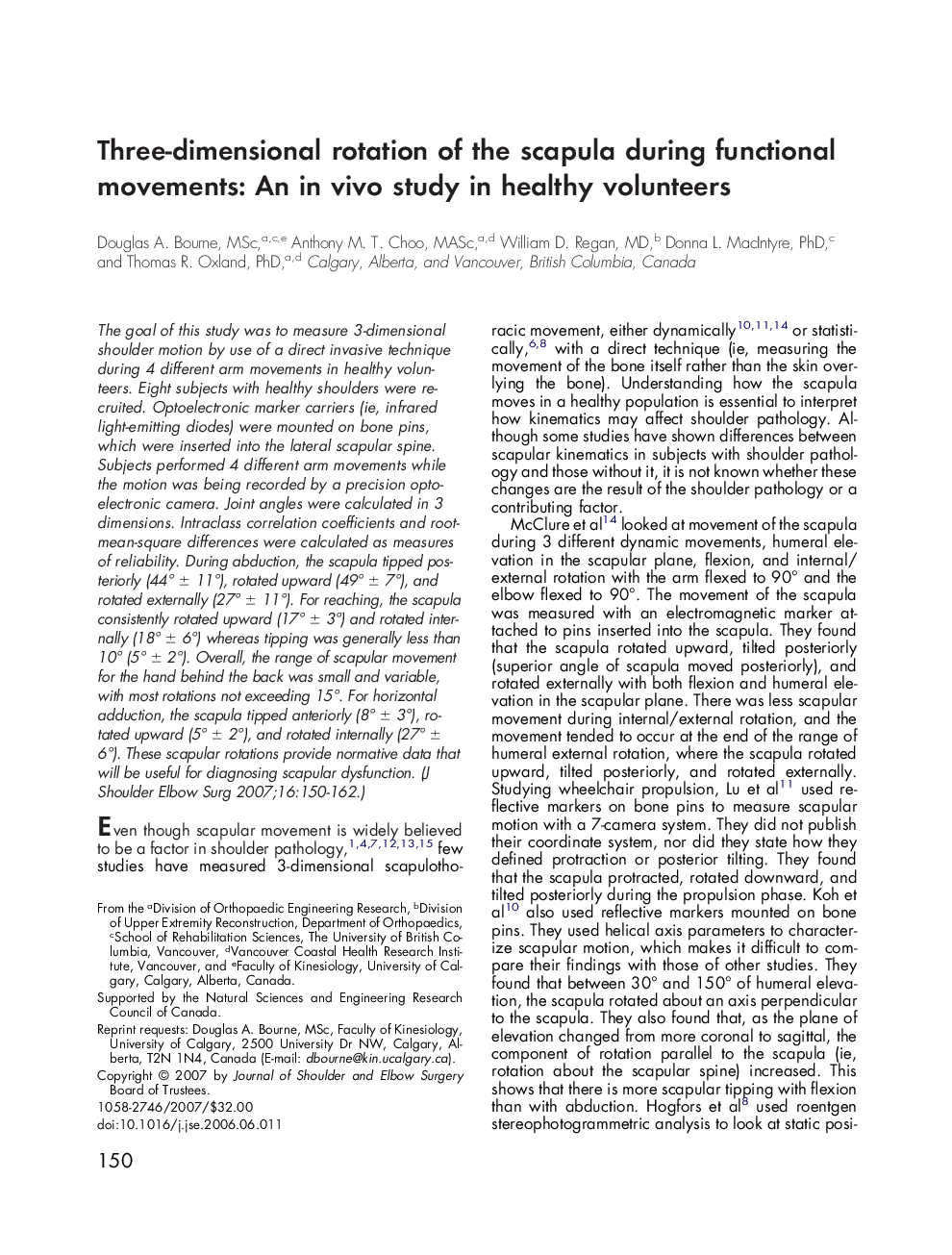| Article ID | Journal | Published Year | Pages | File Type |
|---|---|---|---|---|
| 4076263 | Journal of Shoulder and Elbow Surgery | 2007 | 13 Pages |
The goal of this study was to measure 3-dimensional shoulder motion by use of a direct invasive technique during 4 different arm movements in healthy volunteers. Eight subjects with healthy shoulders were recruited. Optoelectronic marker carriers (ie, infrared light-emitting diodes) were mounted on bone pins, which were inserted into the lateral scapular spine. Subjects performed 4 different arm movements while the motion was being recorded by a precision optoelectronic camera. Joint angles were calculated in 3 dimensions. Intraclass correlation coefficients and root-mean-square differences were calculated as measures of reliability. During abduction, the scapula tipped posteriorly (44° ± 11°), rotated upward (49° ± 7°), and rotated externally (27° ± 11°). For reaching, the scapula consistently rotated upward (17° ± 3°) and rotated internally (18° ± 6°) whereas tipping was generally less than 10° (5° ± 2°). Overall, the range of scapular movement for the hand behind the back was small and variable, with most rotations not exceeding 15°. For horizontal adduction, the scapula tipped anteriorly (8° ± 3°), rotated upward (5° ± 2°), and rotated internally (27° ± 6°). These scapular rotations provide normative data that will be useful for diagnosing scapular dysfunction.
